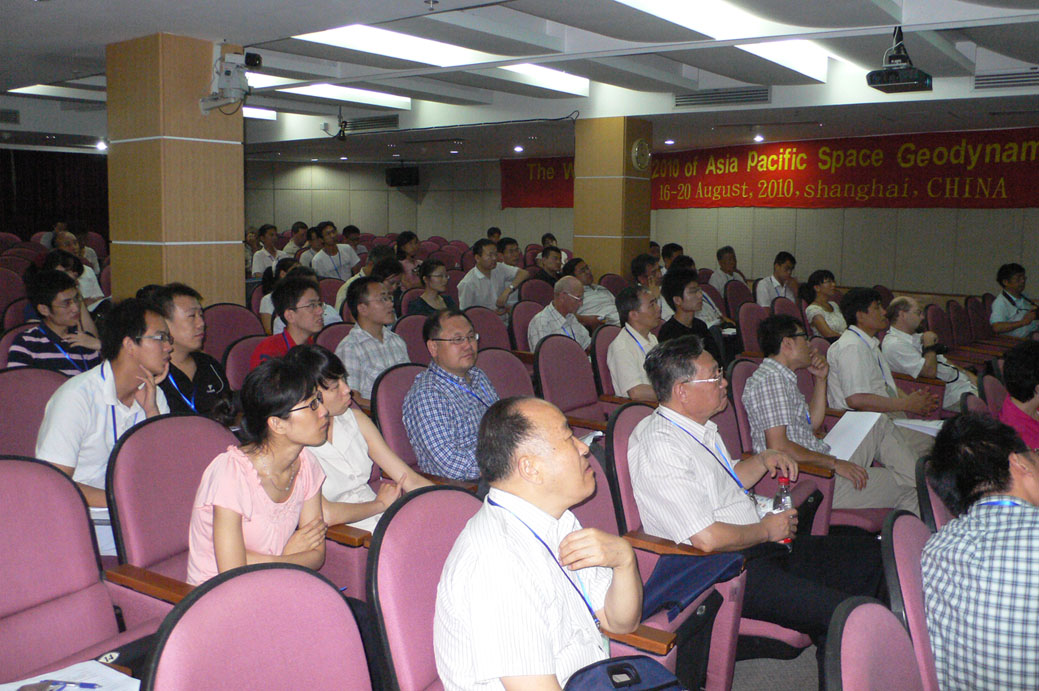|

The 2010 APSG (Asia-Pacific Space Geodynamics program) Workshop on Progress in Space Geodesy and Earth Environment Change. was held in Shanghai, 16-20 August 2010. A series of research progress are reported by participants from both China and other countries and regions of Asia-Pacific area.
Advanced Gravity Measurements and its Applications: By using GRACE, H. T. Hsu, a professor from China, reviewed various applications of GRACE satellite, for example, measuring the groundwater storage and ice movement. He strongly proposed to launch Chinese own GRACE follow-on mission. B. F. Chao from Institute of Earth science, Taiwan, also introduced the unique potential of GARCE measurements in monitoring large-scale hydrological mass variation events and in evaluating advanced climate and land surface models.
Crustal Dynamics and Earthquake: The deformation of Ms 7.1 Yushu earthquake on April 14th 2010 in Tibetan plateau, and the crustal movement caused by Ms8.8 Chile earthquake on Feb.27 2010, are both successfully monitored by 171 Chinese GPS stations and SLR-7405 station, respectively. Professor X. L. Ding reported the latest PSInSAR Time-Series theory without phase unwrapping, and its applications in monitoring the movement of Donghai bridge in Shanghai etc.
Sea Level Change, Water and Atmospheric Variations: The most attractive achievement is that from GRACE and FormoSAT-3/COSMIC (F3/C). F3/C, launched in 2006, has got widely used due to its plenty of observations for GPS radio occultation of atmosphere and ionosphere, and space geodesy/gravity, and its great capability to improve the weather prediction models. Based on the success of F3/C, a follow-on mission tentatively named COSMIC-II is underway in cooperation with NOAA, and is to be launched by 2014.
The Moon and Planetary Geodesy: The measured and simulated results from CE-1, SELENE and YH-1 are all reported, which include the lunar and Mars topography, gravity, rotation and frame, as well as the inner structure.
This workshop was organized by Shanghai Astronomical Observatory, CAS, and cooperatively sponsored by APSG Central Bureau, Shanghai International Culture Association and Institute of Geodesy and Geophysics, CAS. There are about 54 oral presentations and 15 posters covering nearly all of the branches of Space Geodynamics.
(Reported by Chen Yanling, Shanghai Astronomical Observatory, CAS)
|